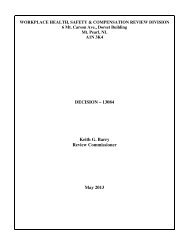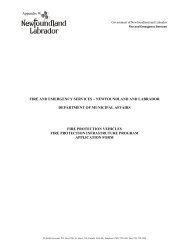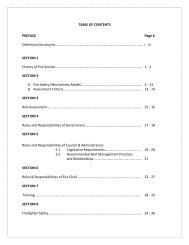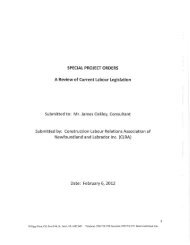Basic Level Pre-Course Reading
Basic Level Pre-Course Reading
Basic Level Pre-Course Reading
You also want an ePaper? Increase the reach of your titles
YUMPU automatically turns print PDFs into web optimized ePapers that Google loves.
Chapter 2<br />
CBRN Response Overview<br />
Fourth, many marginalized “Nation States” also see terrorist organizations<br />
as an instrument to do their bidding in hostilities against their enemies.<br />
Supplying CBRN weapons to terrorist groups is a way to attack their enemies<br />
without implicating themselves.<br />
Fifth, CBRN weapons are becoming easier to manufacture with a minimum<br />
amount of knowledge and equipment. Rapid advances in biotechnology also<br />
forewarn of cheaper and easier CBRN weapons in the near future. These<br />
advances along with books, mail-order publications, and Internet accessibility to<br />
information allow amateurs the means and methods to practice without the<br />
requisite training, weaponry, and operational knowledge.<br />
Other reasons CBRN agents may be advantageous to terrorists include:<br />
• the difficulty in detecting them using traditional anti-terrorist sensor systems<br />
(conventional countermeasures);<br />
• the time-lag (in many cases) for biological agents, between release of an<br />
agent and its perceived effects on humans, allowing the perpetrator(s) to<br />
escape;<br />
• in at least some cases, the lack of an agent “signature,” enabling an assassin,<br />
for example, to disguise the cause of death; and,<br />
• their adaptability to small demonstration attacks as an indication of resolve<br />
and capability to be used in a much more devastating attack. 9<br />
2.1.3 Why Would Terrorists Not Choose CBRN Agents?<br />
For the terrorist, one of the major disadvantages to using CBRN agents is their<br />
indiscriminate nature. Most traditional terrorist groups have clearly defined<br />
enemies that can be targeted relatively easily with traditional weapons. Not so<br />
with CBRN weapons, where friends as well as enemies are likely to suffer. “Both<br />
breathe the same poisoned air, drink from the same contaminated reservoir”. 10<br />
These weapons also require the use of safety equipment (protective clothing,<br />
masks, etc.) as well as antidotes, possibly test animals, and lab facilities.<br />
Delivery systems must then be acquired and tested. The potential user of CBRN<br />
weapons must also consider toxicity, ease of acquisition, agent stability,<br />
immunity to detection, rapidity of effects, and communicability.<br />
There may also be reluctance on the part of potential users to learn about new<br />
and relatively complicated weapons when high explosives and automatic<br />
weapons are readily available.<br />
9<br />
10<br />
CSIS (Canadian Security Intelligence Service) – Chemical and Biological Terrorism, “First Responders Briefing<br />
Pack”, Ottawa, Ontario, Canada. 1997.<br />
Laqueur, W. The New Terrorism, Oxford University <strong>Pre</strong>ss, NY, 1999.<br />
CBRN First Responder Training Program 6 <strong>Basic</strong> <strong>Level</strong> <strong>Course</strong>

















